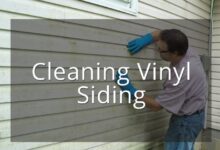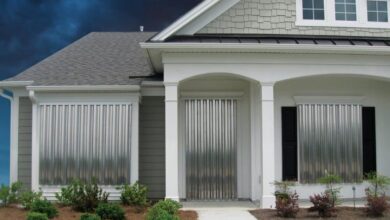Siding Installation Guide: Expert Tips, Benefits, and Best Products to Choose for Your Home
When it comes to improving the curb appeal and durability of your home, siding installation plays a crucial role. But with so many options out there, how do you choose the best one for your project? This detailed guide will walk you through the key aspects of siding installation, including the best products to consider, the benefits of each, and where to buy them.
Let’s dive in and ensure your next siding project is a success!
What is Siding Installation?
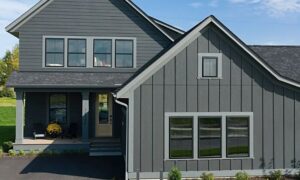
Siding installation involves attaching exterior panels (or siding) to the outside walls of your home. These panels protect your home from the elements, enhance energy efficiency, and contribute to the overall aesthetic appeal of your property. Siding is a vital part of any home improvement project and can dramatically impact your property’s long-term value.
There are various types of siding materials, each offering different advantages depending on your needs. Some of the most popular types include vinyl, wood, fiber cement, and metal.
Why Is Siding Installation Important?
- Protects Your Home: Proper siding installation keeps moisture, pests, and other environmental factors from damaging your home’s structure.
- Enhances Energy Efficiency: Insulated siding helps to keep your home cool in summer and warm in winter, reducing energy costs.
- Boosts Curb Appeal: A well-chosen siding option can dramatically enhance your home’s appearance.
- Increases Property Value: New, well-maintained siding is a valuable investment that can increase the resale value of your property.
Benefits of Installing Quality Siding
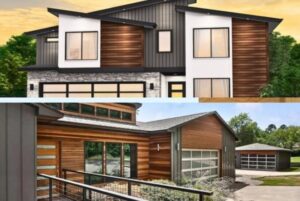
When choosing the right siding for your home, consider the following key benefits:
1. Durability
The right siding can withstand harsh weather conditions, including rain, snow, wind, and UV rays. This helps to maintain your home’s structural integrity for years to come.
2. Low Maintenance
Some siding materials, like vinyl and fiber cement, require little to no maintenance, saving you time and money in the long run.
3. Improved Aesthetic Appeal
High-quality siding adds beauty and charm to your home, improving its overall curb appeal.
4. Energy Efficiency
Well-insulated siding helps regulate your home’s temperature, reducing heating and cooling costs.
5. Eco-friendly Options
Certain siding materials are made from sustainable materials or can be recycled, helping to reduce your environmental footprint.
Top Siding Products for Installation
Let’s explore some of the best siding products on the market today, and see how they stack up against each other in terms of price, features, and performance. Below is a comparison of five top-rated products to help you make an informed decision.
1. James Hardie Fiber Cement Siding
James Hardie offers one of the most durable and weather-resistant siding options available. Known for its strength, this product comes in a variety of colors and styles.
- Pros:
- Highly durable and resistant to harsh weather.
- Fire-resistant and pest-resistant.
- Requires less maintenance.
- Cons:
- Can be more expensive than vinyl siding.
- Heavy material requires professional installation.
- Price: $5 – $8 per square foot.
- Best For: Homeowners in regions with extreme weather conditions, such as hurricanes or wildfires.
2. Mastic Vinyl Siding
Mastic is a popular choice due to its affordability and wide selection of colors and textures.
- Pros:
- Low cost and easy installation.
- Minimal maintenance.
- Available in a variety of colors and styles.
- Cons:
- Can be less durable than fiber cement.
- Prone to cracking in extreme cold temperatures.
- Price: $3 – $7 per square foot.
- Best For: Budget-conscious homeowners who want easy installation and good aesthetic appeal.
3. LP SmartSide Engineered Wood Siding
LP SmartSide offers a wood-like appearance with all the benefits of engineered materials, such as enhanced durability and moisture resistance.
- Pros:
- Stronger than traditional wood siding.
- Resists warping, cracking, and splitting.
- Environmentally friendly.
- Cons:
- Higher installation cost.
- Requires more maintenance than vinyl.
- Price: $4 – $7 per square foot.
- Best For: Homeowners looking for a wood aesthetic with less upkeep.
4. Aluminum Siding
Aluminum Siding is another option that’s both durable and aesthetically versatile.
- Pros:
- Resistant to weathering and rust.
- Low maintenance.
- Long-lasting color and finish.
- Cons:
- Can dent easily.
- Limited insulation.
- Price: $4 – $8 per square foot.
- Best For: Homeowners in moderate climates who want a sleek, modern look.
5. Cedar Shake Siding
Cedar Shake Siding provides a natural wood appearance, ideal for traditional-style homes.
- Pros:
- Timeless aesthetic.
- Excellent insulation properties.
- Naturally resistant to decay.
- Cons:
- High maintenance compared to synthetic options.
- Can be expensive.
- Price: $7 – $10 per square foot.
- Best For: Homeowners who prefer a classic, rustic aesthetic and don’t mind performing regular maintenance.
Siding Comparison Table
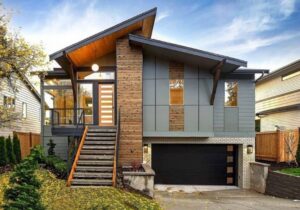
| Product | Use Case | Pros | Cons | Price | Features |
|---|---|---|---|---|---|
| James Hardie Fiber Cement | Extreme weather conditions, high durability | Fire-resistant, weatherproof, low-maintenance | Heavy, expensive | $5 – $8/sq ft | ColorPlus technology, 30-year warranty |
| Mastic Vinyl | Budget-friendly, easy installation | Low cost, variety of styles, minimal upkeep | Less durable than fiber cement | $3 – $7/sq ft | Fade-resistant, insulated options |
| LP SmartSide | Wood aesthetic with modern durability | Stronger than wood, environmentally friendly | Requires maintenance, expensive | $4 – $7/sq ft | Moisture-resistant, long-lasting finish |
| Aluminum | Sleek, modern look with rust resistance | Low maintenance, rust-resistant | Can dent easily, poor insulation | $4 – $8/sq ft | Lightweight, versatile finish |
| Cedar Shake | Traditional style, natural wood appearance | Aesthetic appeal, great insulation | Expensive, high maintenance | $7 – $10/sq ft | Classic look, natural resistance to decay |
How to Buy Siding Materials
Buying siding materials for your home improvement project involves a few crucial steps to ensure that you select the right product, at the right price, with the proper installation process. Here’s a step-by-step guide on how to go about purchasing your siding:
1. Determine the Type of Siding You Need
First, you need to decide which type of siding best suits your home. As we discussed earlier, popular options include:
- Vinyl Siding: Affordable, low-maintenance, and available in a wide variety of colors and styles.
- Fiber Cement (e.g., James Hardie): Highly durable and fire-resistant, perfect for homes in areas with extreme weather.
- Wood Siding (e.g., LP SmartSide or Cedar Shake): Classic aesthetic, excellent insulation, but requires more maintenance.
- Metal/Aluminum Siding: Great for modern, sleek looks, and offers good weather resistance but may dent easily.
Understanding the pros and cons of each type will help you make an informed decision based on your budget, style preferences, and local weather conditions.
2. Research Brands and Suppliers
Once you know which type of siding you want, it’s time to research trusted brands and suppliers. Some well-known brands in the siding industry include:
- James Hardie (for fiber cement siding)
- Mastic (for vinyl siding)
- LP SmartSide (for engineered wood)
- CertainTeed (for both vinyl and fiber cement)
- Royal Building Products (for aluminum and vinyl siding)
Each brand offers different features, warranties, and prices, so take the time to check their official websites or visit their local dealers to compare product lines.
3. Check Online and Local Stores
There are multiple ways to buy siding, depending on your preference and location.
Online Retailers
You can shop for siding materials online through major retailers like:
- Home Depot
- Lowe’s
- Amazon (for specific siding accessories or tools)
These websites often provide customer reviews, detailed product descriptions, and even tools to help you estimate how much material you’ll need.
Local Home Improvement Stores
Visiting a local store can give you the advantage of inspecting samples in person. You can also talk to a sales associate who may help you choose the right material based on your location, needs, and budget. Look for popular chains like:
- Home Depot
- Lowe’s
- Ace Hardware
Specialty Stores
Certain brands like James Hardie or Royal Building Products may sell exclusively through authorized dealers or specialized home improvement contractors. You can find these by visiting their official websites or contacting their customer service to locate a nearby distributor.
4. Calculate How Much Siding You Need
Accurate measurements are critical when buying siding. You don’t want to overestimate and end up with extra materials, or underestimate and have to reorder. Here’s how you can calculate the siding material required:
- Measure the square footage of the exterior walls of your home (length x height for each section).
- Subtract any windows and doors (since they won’t be covered in siding).
- Add around 10% extra for cutting waste or unexpected errors.
You can use online calculators offered by brands like James Hardie or Home Depot to help estimate how much siding you’ll need based on the size of your home.
5. Get Quotes for Installation
Once you’ve chosen the siding, it’s time to think about installation. Some retailers offer installation services, or you may need to hire an independent contractor. Here’s how to handle this:
- Online Retailers: Some sites like Home Depot and Lowe’s offer installation services at the point of purchase. Make sure to ask about pricing and what the service includes (e.g., removal of old siding, delivery, labor, etc.).
- Local Contractors: You can also find siding contractors via online platforms like Angie’s List, HomeAdvisor, or your local listings. Get quotes from at least three contractors to compare prices and services.
6. Look for Deals and Promotions
Siding can be a significant investment, so it’s important to watch for deals that can save you money. Here are a few tips to help you save:
- Seasonal Discounts: Many retailers offer discounts during certain times of the year, particularly in the off-season (fall and winter).
- Bulk Purchasing: If you’re doing a large project, inquire about bulk pricing or ask for a discount on large quantities.
- Rebates: Some manufacturers offer rebates or incentives, especially for energy-efficient siding materials.
7. Where to Buy Siding Materials: Key Links
Here are some of the most trusted websites where you can purchase siding materials:
- James Hardie Official Site – Known for durable fiber cement siding.
- Home Depot Siding – Offers a variety of siding materials, from vinyl to fiber cement.
- Lowe’s Siding – Good selection of vinyl, wood, and fiber cement siding.
- Royal Building Products – For vinyl and aluminum siding.
- Mastic Siding – Specializes in vinyl siding solutions.
8. Consider Delivery and Warranty
When buying siding materials, ask about delivery options, especially if you’re purchasing large quantities. Many retailers offer free or discounted delivery, particularly for larger projects. Additionally, check the warranty information. High-quality siding products usually come with a 10-30 year warranty or even a lifetime warranty.
Summary: How to Buy Siding Materials
- Decide on the type of siding (vinyl, fiber cement, wood, or aluminum).
- Research trusted brands (e.g., James Hardie, Mastic, LP SmartSide).
- Shop online or visit local retailers like Home Depot or Lowe’s.
- Measure your home and calculate the amount of siding required.
- Consider installation services and get quotes from contractors.
- Look for deals, promotions, and rebates to save on costs.
- Check for delivery options and review product warranties before finalizing your purchase.
5 Frequently Asked Questions (FAQ) About Siding Installation
1. What is the best type of siding for my home?
It depends on your location, budget, and desired aesthetics. Fiber cement and vinyl siding are great options for durability, while wood siding offers a classic look. Consult with a professional installer for personalized recommendations.
2. How long does siding installation take?
Siding installation usually takes 2-7 days, depending on the size of your home and the type of siding you’re installing.
3. Is siding installation a DIY project?
While it is possible to install siding yourself, it’s often better to hire a professional, especially for materials like fiber cement or wood that require specialized tools and expertise.
4. How much does it cost to install siding?
The cost varies based on the material and the size of your home. On average, homeowners spend between $5,000 and $14,000 on siding installation.
5. Can siding be installed over old siding?
Yes, in many cases, new siding can be installed over existing siding, but it’s best to consult a professional to ensure the underlying structure is sound.




